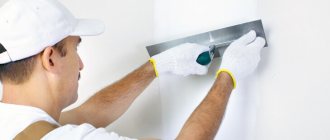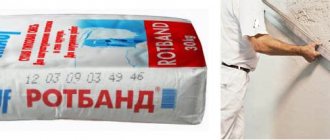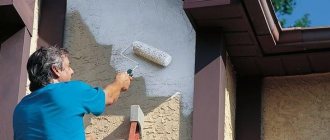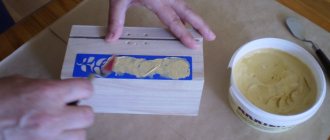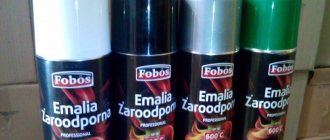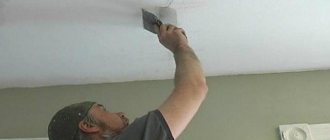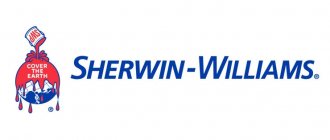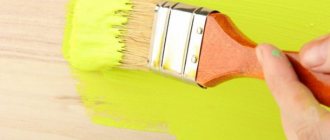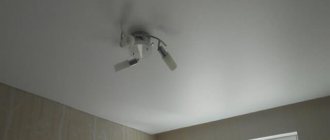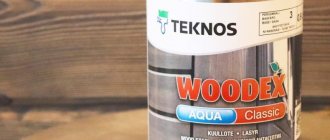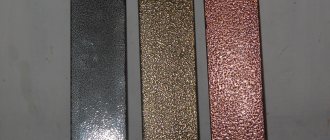Chemical composition
If water or alcohols are used as a solvent in these products, then the binding element is synthetic polymers - PVA, acrylates, styrene-butadiene and butadiene-nitrile rubber. In addition, the structure of water-based painting mixtures contains:
- all kinds of coloring pigments;
- hardeners – driers;
- plasticizers designed to impart elasticity to the hardened coating and keep the entire paint and varnish system in a uniform state.
Used for finishing walls, ceilings and other surfaces indoors and outdoors (except for subfloors), these mixtures are chemically aqueous dispersions of an insoluble paint and varnish composition based on a polar solvent. Requirements for the values of mass fractions of constituent elements, as well as technical characteristics, are specified in the national standard GOST 28196-89.
Manufacturers
When choosing the really best paint for wood, pay attention to its packaging, components, and expiration date. Good manufacturers produce their products in sealed containers, convenient for long-term storage. They also correctly label the product, indicating on the packaging all the information necessary for the consumer.
Among the already established manufacturers of wood painting products:
- Tikkurila is a Finnish brand that specializes in the production of all kinds of finishing materials. Although its products have a fairly high price compared to others, it is fully compensated by quality. Painting wooden lining, ceilings, floors, furniture, windows and doors with materials from this manufacturer will give them an excellent appearance and protection from environmental influences;
- Alpina - products are manufactured in Germany, have an attractive price and good quality. The manufacturer produces materials for both exterior finishing of wooden buildings and interior work. The advantage is a wide color palette;
- Neomid is a domestic manufacturer that can easily compete with foreign companies. Neomid produces interior paint for wood with increased fire-resistant properties;
- Belinka is a medium-priced, high-quality product from Slovenia. It has a wide range of finishing materials for wood, including protection against fungus, moisture, sun, and chemicals. This product is easy to work with, as it has an optimal texture and does not spread on the surface.
Now you know that when choosing what paint to paint a wooden house inside or outside, you need to pay attention to the main characteristics and positive properties of the available range and purchase what is best suited for your case and budget. However, remember that good and correctly selected finishing materials will help keep the treated surface intact and neat for a long time and will allow you to make repairs much less frequently.
For lovers of natural compositions, we recommend that you get acquainted with such a material as paint with wax for walls. This may be what you need. You may also be interested in learning how to paint the steps of a wooden staircase.
Purchase issues for interior or exterior finishing
For the consumer, an important feature of water-based paints is the fact that these finishing materials have an attractive price. The exact price tag depends on what kind of water-soluble paint is planned to be used for finishing the external or internal walls of the building. Thus, PVA-based compositions are the cheapest, but they are difficult to tint. However, they are extremely unstable to abrasion and the influence of high humidity.
An intermediate position is occupied by acrylic paints, the copolymer base of which is quite tolerant of the presence of water vapor in the air, but does not tolerate drops or smudges on the painted wall.
Water-soluble latex paints have become the most expensive, but at the same time the most resistant to wear and moisture. Such coatings can be washed as much as you like, but in terms of light resistance they are somewhat inferior to their acrylic competitors. While acrylic and latex paint complexes can be used for exterior finishing of façade parts of a building, polyvinyl acetate paints are only suitable for painting the interior surfaces of dry walls.
Latex water-dispersion paints are the most resistant to wear and moisture, but they are also much more expensive
Recently, combined compositions can be found on the market of paints and varnishes. Due to the difference in the percentage of latex and acrylic, the exact properties of such mixtures differ. Therefore, when choosing water-soluble paint for walls when decorating an entire room, you need to compare the properties indicated on the packaging and the planned operating conditions of the paint coating. For example, for painting surfaces in dry rooms where there is a risk of contamination of the layer, it is optimal to use materials marked “for dry rooms with low operational load.”
Algorithm for applying CM on varnish
When you are certain what paint can be applied to the varnish, it is worth familiarizing yourself with the peculiarities of the process of painting a varnished surface.
Much attention is paid to preparing the foundation. The old layer is inspected for strength of adhesion to the surface, for the possibility of it falling off, and for the absence of exfoliated fragments.
Preparing the base
- The surface with a varnish layer is cleaned and sanded. By cleaning, all obstacles that would reduce the adhesion of the paint and the base are removed.
- If wood is to be painted, then cracks and irregularities are eliminated with a special wood putty, for example, Neomid putty for wood, teak color 1 kg for 372.0 rubles. This is done to ensure uniform application of CM. The manufacturer indicates the drying time of the composition.
- After the leveling material has dried, grinding begins: using sandpaper with medium grain, differences are removed (P60-P80); with fine grain (P120-P220) the surface is given a matte finish. Roughness increases adhesion.
- After sanding, remove dust and dirt with a damp cloth. The product is degreased.
- To increase adhesion, a primer primer is applied for painting: Primer for old paint 2.5 kg for 300 rubles, manufacturer in Orenburg. For processing small items, a brush 2.5-5 cm wide is recommended. The drying time of the first layer of primer is indicated by the manufacturer on the container. The coating must be two-layer.
CM application stage
The dye is applied after the primer layer has dried.
- In the container, the composition is thoroughly mixed.
- Pigment is introduced into the silicone group CM to obtain the desired shade.
- The number of layers of paint depends on the desired result. If after the first layer you are satisfied with the coloring result, then you can stop there.
- To protect the painted surface, varnish is applied.
Advantages and disadvantages
Those water-soluble (acrylic, latex and PVA) paints that are used for decorative treatment of walls and other surfaces made of wood, plaster, putty, brick are valued by builders and designers for many advantages. Let's list the main ones:
- Ease of application, as well as safety; when working with water-dispersion paints, there is no need to protect the operator’s respiratory organs, because these materials are practically odorless, and their fumes are not particularly toxic.
- The high speed of the polymerization process in air ensures a short drying time of the paint coating, the exact duration of which is determined by specific local conditions (optimally: good ventilation, low or moderate humidity, temperature in the range of 22–26 degrees Celsius).
- Excellent adhesion and versatility in relation to the working surface: cement-sand base, brickwork or gas silicate blocks, plasterboard and products based on it, lumber and natural wood - water-soluble colored and white paints are ideal for all surfaces.
- Thin-layer application, good hiding power and huge possibilities for choosing shades due to the good compatibility of the copolymer dispersion with different types of pigments from which the colors are made.
- The tightness of the layer, which protects the materials of walls, partitions and ceilings from unwanted microbiological activity and corrosion processes, and also allows to increase the service life of the base.
- The aesthetic appeal of a decorative coating, acrylic paints after hardening give a calm, fine roughness, latex paints form matte layers with a slight glossy sheen.
When considering the disadvantages of this product, it should be taken into account that the polymerization process is possible only at positive temperatures.
Therefore, on packages with coloring dispersions, domestic and imported manufacturers indicate a limitation - the temperature of the wall or other working substrate should not be lower than +5 degrees Celsius. In addition, in winter it is unacceptable to store paint containers in unheated warehouses or other rooms.
The high setting rate, due to the water or alcohol base, for water-soluble paints and varnishes results in the possibility of thickening of the composition during storage. But due to the availability of solvents, eliminating this problem is not particularly difficult.
Water-borne paint dispersions are widely used in the construction industry: for initial finishing, repair or reconstruction of outdated finishing. Allowing you to mask microcracks, these paints and varnishes are characterized by the elasticity of the layer. This quality makes them the best option for finishing wood products, because such material can change volume during use.
Tool selection
To paint wood with enamel you will need a minimum number of tools, necessary materials and special technologies for its use. Before carrying out painting work, you must stock up on a brush or roller with which you will paint the working surface. Instead of a roller, you can use a spray bottle. It is worth noting that using a spray gun allows you to reduce paint consumption and apply it in a more uniform layer when painting a surface.
In addition, for painting work you will need personal protective equipment and sandpaper. To clean the surface to be painted, you can use a special sanding wheel instead of sandpaper. Gloves, protective transparent glasses, as well as a respirator or a special filter are used as personal protective equipment.
Where else are water-borne coatings needed?
Not only in the production of building materials there is a tendency to displace organic solvents from paint and coating materials. Industrialists specializing in the supply of paints for painting also meet the wishes of artists and produce water-soluble oil paints. These unusual compositions retained the advantages of oil-based paints (flexibility, elasticity), but got rid of the disadvantages of classic paints caused by the presence of toxic and aggressive solvents.
Water-soluble oil paints are widely used by artists in their work.
The chemical composition of such products is a trade secret of the manufacturers. However, from a theoretical point of view, it is possible to achieve the solubility of oils with water by adding polyethylene glycol or surfactants to the structure. Obviously, the advantages of such products will be the reason for further developments in the production of oil suspensions diluted with ordinary water.
Main features of wood enamel
Enamels are used not only to color wood, but also to create a wear-resistant coating that is indifferent to water drops and jets, and to dirt particles. The color variety of current coloring compositions is very large - every buyer will find exactly the shade that he needs.
Among all brands of enamels, those that can be used not only for wood, but also for concrete, plastic and metal deserve special attention - such versatility can help save money.
And one more useful note: the price in this segment, as a rule, really reflects the level of quality. That is, more expensive enamel will certainly have better hiding power (hiding power means the ability of the composition, when applied equally to the surface, to hide its original color).
What is glazing
Glazing is the name for painting surfaces in which they are not hidden under a continuous layer of coating, but retain their texture and pattern. For this purpose, translucent colorless or colored compositions are used - paints, varnishes, waxes, stains, impregnations. In addition to being decorative, they also perform protective functions and protect treated surfaces from moisture, dirt, fading, and various mechanical damage.
Most often, wooden surfaces are glazed to change the natural shade of the wood and highlight its unique texture. Glazing varnish is also applied to mineral substrates - brick and stone masonry, decorative plaster. An unusual effect can also be achieved when covering with textured wallpaper. Glazing creates an additional decorative effect, emphasizing the relief and volume of the surface, changing its shade depending on the viewing angle.
Decorative plaster with glaze coating Source art—deco.com
